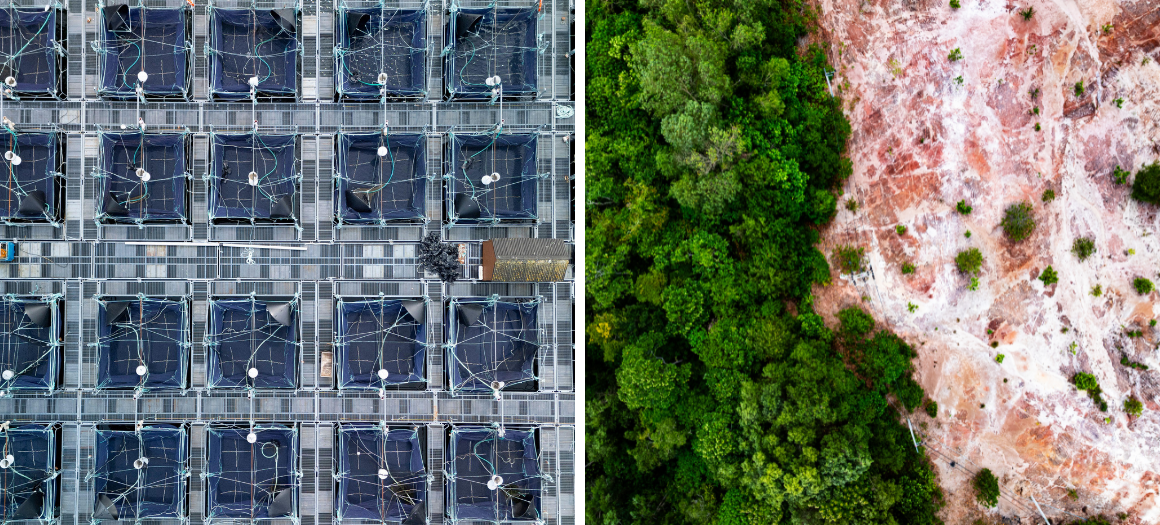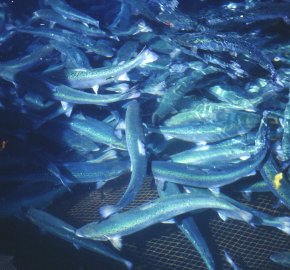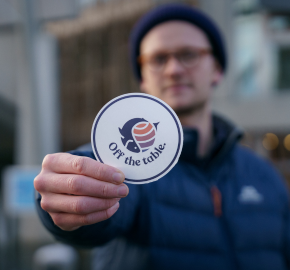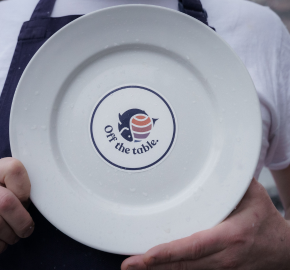Salmon, Soy and the Amazon: COP30 highlights the global impacts of Scottish salmon farming

It’s that time of the year again, where world leaders dust off their suitcases and assemble a small army of private jets to fly them individually to an exotic location where they can discuss (and really seriously this time) how best to tackle the global climate crisis. Over the past week, COP30 (the 30th meeting of the Conference of the Parties to the UN Framework Convention on Climate Change – to give it its full name) has been in full swing in the Amazonian city of Belém in Brazil.
Brazil truly leads the way in environmental catastrophe when it comes to deforestation. Between 2015 and 2020, Brazil had a yearly rate of 1.7 million hectares of deforestation, accounting for 22% of global deforestation per year in this period (the highest of any country). It has also cut down a total of 73 million hectares of forest since 2001, second only to Russia: 75% of this deforestation is estimated to be permanent compared to just 2% in Russia (Global Forest Watch, 2025).
While Brazilian deforestation may feel a million miles away from the problems faced by wild fish here in the UK, you may be surprised to discover that Scottish farmed salmon has a direct link to the destruction of the Amazon rainforest.
It is important for often out-of-touch world leaders to be able to see the impacts of global climate change first-hand, and a city at the gateway to the Amazon rainforest could be seen as the perfect location. In fact, they will have beautiful views of the rainforest on either side of the new four-lane highway, which has cut through tens of thousands of acres of protected rainforest to ease traffic congestion in the city during the conference (BBC News, 2025).
The soy-salmon link
The Scottish salmon farming industry relies on ingredients from world markets to feed the hundreds of millions of fish it intensively farms every year. Globally, approximately 60–70% of the ingredients come from crops like soy, sunflower, rapeseed, corn and wheat, with the remaining 20–40% made up of marine ingredients such as fish meal, fish oil and trimmings (Shepherd et al., 2017). Scottish salmon has historically used more marine content than other countries, but the long-term trend is clear: less fish, more crops. And that shift carries its own environmental cost.
Feed is by far the biggest part of salmon farming’s footprint — around 90% of a farm’s greenhouse gas emissions come from the feed alone (Hammer et al., 2022). Most of those emissions can be traced back to the plant ingredients. About 73% of the emissions from Scottish feed come from crops like soy, rapeseed and wheat, with soy standing out because of its high emissions and wider impacts from land clearance, agriculture and long-distance transport (McGoohan et al., 2021).
Most of that soy comes from the world’s biggest exporter, you guessed it: Brazil.
The scale is staggering. Brazil grows soy across an area bigger than Germany, and even with that, it’s still bulldozing between 500,000 and 800,000 hectares of land each year to keep up with demand (SEI, 2022). If you want a mental image, imagine an area the size of Cyprus disappearing annually, lost into a sea of soybean monoculture.
This isn’t fringe production for tofu and oat-milk lattes. Only a tiny proportion of global soy is eaten directly by people. The vast majority is crushed into meal and oil for the meat, dairy, and aquaculture industries.
The end of the moratorium: a step backwards
For nearly two decades, the Amazon Soy Moratorium was the one thing slowing the destruction. It was a rare bright spot in the global fight against deforestation: a voluntary agreement between environmental NGOs, grain traders, and the Brazilian government that banned soy from land cleared after 2008. In 18 years, it prevented around 18,000 square kilometres of deforestation – roughly the size of Portugal (Heilmayr et al., 2020).
But as COP30 begins, Brazil’s competition authority has just declared the moratorium illegal. With it goes the only serious safeguard that stopped soy traders buying directly from newly cleared Amazonian land.
The guardrails protecting the Amazon have just been stripped away and that leaves global industries that depend on soy – including aquaculture – exposed. It’s yet another reason why Scottish salmon producers can’t hide behind “responsible sourcing” labels.
Soy isn’t harmless – it’s one of the most destructive crops on Earth
It doesn’t take much digging to see why this is such a problem.
Soy gives fairly mediocre yields, so it needs a huge amount of land to produce. When that land is rainforest, the environmental costs pile up fast. Clearing forests destroys wildlife habitats and cuts into one of the planet’s largest carbon sinks. Once soy moves in, the problems don’t stop there: pesticides and fertilisers pollute rivers, trigger algal blooms, and strip oxygen from water. Communities are displaced. Indigenous land rights are trampled. Water scarcity worsens. Soil erodes. Biodiversity collapses.
This is the system feeding Scotland’s “sustainable” salmon.
“Sustainable” Scottish salmon is a myth
If the industry’s feed footprint were its only issue, that would be bad enough. But open-net salmon farming already comes with a long list of environmental problems. Pollution from chemical treatments and organic waste, the prolific dispersal of sea lice parasites and other diseases, and farmed salmon escapes all contribute to the notable decline of wild salmon and sea trout populations across the UK. Meanwhile, mass mortality events continue to escalate.
Supermarkets and salmon companies love to certify their products. “Responsible”, “sustainable”, “environmentally conscious” – there’s always a logo ready to reassure consumers. The Scottish aquaculture industry was keen to bang the drum about the sustainability of their soy feed when the soy moratorium made it impossible to buy soy grown on deforested land, but can they give the same commitments now the moratorium that protected the Amazon is gone?
There’s a better way forward – it starts with removing farmed salmon from the menu
The good news is we’re not powerless. Every time someone chooses not to buy farmed salmon, that’s a tiny shift away from this destructive system. When restaurants and chefs take farmed salmon off their menus, it sends a message even louder.
That’s what Off The Table is about. It’s a growing movement of chefs, restaurants, and consumers choosing not to serve, buy, or eat farmed salmon.
Chefs across the UK need to understand how atrocious farmed salmon is. It shouldn’t be in our waters and it shouldn’t be in our restaurants.
Lloyd Morse
The Palmerston, Edinburgh
COP30 may yet be considered a success, or just another year of hot air (released from burning fossil fuels). But the good news is that real change rarely comes from politicians first- it comes from us. In this case, what we choose to put on our plates.
If we want food systems that don’t come at the planet’s expense, from Scottish rivers to the Amazon rainforest, then cutting farmed salmon out of the picture is one of the simplest, most immediate steps we can take.
Follow the link below to join the growing movement of chefs, restaurants, writers, caterers and food lovers taking farmed salmon Off The Table.
Join Off The Table
List of references
Barros, E., Grimaldi, M., Sarrazin, M., Chauvel, A., Mitja, D., Desjardins, T., & Lavelle, P. (2004). Soil physical degradation and changes in macrofaunal communities in Central Amazon. Applied Soil Ecology, 26(2), 157–168. https://doi.org/10.1016/j.apsoil.2003.10.012
BBC News. (2025, March 12). Amazon rainforest cut down to build highway for COP climate summit. BBC News. https://www.bbc.co.uk/news/articles/c9vy191rgn1o
Global Forest Watch. (2025). Global Deforestation Rates & Statistics by Country | GFW. Forest Change. https://www.globalforestwatch.org/dashboards/global?category=forest-change
Hammer, A. J., Millar, C., & Hennige, S. J. (2022). Reducing carbon emissions in aquaculture: Using Carbon Disclosures to identify unbalanced mitigation strategies. Environmental Impact Assessment Review, 96, 106816. https://doi.org/10.1016/j.eiar.2022.106816
Heilmayr, R., Rausch, L. L., Munger, J., & Gibbs, H. K. (2020). Brazil’s Amazon Soy Moratorium reduced deforestation. Nature Food, 1(12), 801–810. https://doi.org/10.1038/s43016-020-00194-5
McGoohan, A., Tait, J., Raybould, A., Parris, S., & Hammond, K. (2021). Fish Farming in Scotland: Optimising Its Contribution to Climate and Environmental Policies.
Rasiah, V., Florentine, S. K., Williams, B. L., & Westbrooke, M. E. (2004). The impact of deforestation and pasture abandonment on soil properties in the wet tropics of Australia. Geoderma, 120(1), 35–45. https://doi.org/10.1016/j.geoderma.2003.08.008
SEI. (2022). Stockholm Environment Institute. Connecting Exports of Brazilian Soy to Deforestation. https://www.sei.org/featured/connecting-exports-of-brazilian-soy-to-deforestation/
Shepherd, C. J., Monroig, O., & Tocher, D. R. (2017). Future availability of raw materials for salmon feeds and supply chain implications: The case of Scottish farmed salmon. Aquaculture, 467, 49–62. https://doi.org/10.1016/j.aquaculture.2016.08.021




